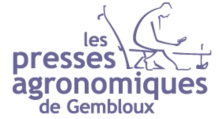Resource information
Land issues, exploitation of natural resources, and Forests of Rural Communities in the periphery of Kinshasa, DRC. Peri-urban forests are under strong anthropic pressure. Any activity needs a previous identification of stakeholders, landscape perception, socio-economic trends in local communities and their relationships with land and natural resources. Kinshasa (capital of Democratic Republic of Congo, DRC) is a 10 millions inhabitants city with rapid growth and increasing impacts on surrounding villages linked with forest natural resources. This paper describes the relationship amongst local communities stakeholders and their relations with land areas and wood resources. Two areas surrounding Kinshasa (Bas-Congo and Bateke Plateaux) are considered as major fuel-wood and charcoal supply zones for the city. Those two areas are different in terms of land pressure (very high in Bas-Congo and focused on riparian forests on Bateke Plateaux), but show the same pattern of overuse of the forest and woody natural resources. In both areas, local management of forest resources by the traditional authorities (heads of village or lineage) has failed. Local population willingness for reforestation and forest restoration activities is much more important in Bas-Congo than on Bateke Plateaux. In both areas, shifting cultivation due to slash and burn practices for agricultural and charcoal practices are more and more quick. This has strong negative impact on the potential of regeneration process with local forest species. Sustainability of forest natural resources management by communities is discussed in regard to the on going negotiations on community based forest management regulations.



